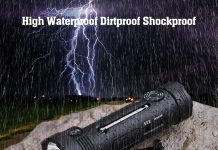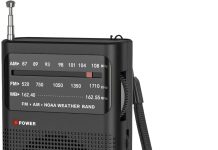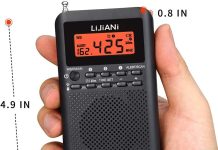Sure, you love staying informed about the weather, but carrying a weather radio everywhere you go just isn’t practical. You find yourself asking, “Can I connect my weather radio alerts to my cell phone?” Well, the good news is, there are indeed ways to link your trusty weather radio to your mobile device, ensuring you never miss an important weather update again. In this article, we’ll explore some options that will enable you to receive those life-saving weather alerts directly on your phone, keeping you prepared and safe no matter where you are. So, let’s dive in and discover how to connect your weather radio alerts to your cell phone!
Review contents
What is a weather radio?
A weather radio, also known as an emergency alert radio, is a communication device that receives weather alerts and warnings from the National Weather Service (NWS) and other authorized agencies. It broadcasts alerts for severe weather events such as hurricanes, tornadoes, floods, and other emergency situations directly from the NWS. A weather radio is an essential tool for staying informed about potentially dangerous weather conditions in your area.
Why connect weather radio alerts to your cell phone?
Connecting weather radio alerts to your cell phone offers several advantages over traditional weather radio systems. These advantages include enhanced accessibility, real-time updates, convenience, and flexible options.
Enhanced accessibility
By connecting weather radio alerts to your cell phone, you can receive important weather information regardless of your location. Whether you are at home, at work, or on the go, you can stay informed about any severe weather threats in your area. This enhanced accessibility ensures that you are always prepared and can take appropriate actions to protect yourself and your loved ones.
Real-time updates
Weather conditions can change rapidly, and it’s crucial to have access to real-time updates. Connecting weather radio alerts to your cell phone allows you to receive instant notifications about severe weather events as they are happening. This timely information enables you to make informed decisions and take necessary precautions to ensure your safety.
Convenience
Carrying a separate weather radio device can be cumbersome, especially when you already have a cell phone that you always carry with you. By connecting weather radio alerts to your cell phone, you eliminate the need to carry an additional device. This convenience means you can stay updated on weather alerts without the hassle of carrying multiple devices.
Flexible options
Connecting weather radio alerts to your cell phone offers flexibility in how you receive and interact with alerts. You can choose from various methods such as Wireless Emergency Alerts (WEAs), mobile apps, or dedicated weather radio apps. Each method has its own set of features and benefits, allowing you to personalize your weather alert experience based on your preferences and needs.
Methods to connect weather radio alerts to your cell phone
There are several methods available to connect weather radio alerts to your cell phone. Each method has its own advantages and limitations. It’s important to understand these methods to choose the one that suits your needs and preferences.
Wireless Emergency Alerts (WEAs)
Wireless Emergency Alerts (WEAs) are a government-operated system that sends emergency alerts directly to cell phones. WEAs are automatically enabled on most modern cell phones and do not require any additional apps or subscriptions. They provide real-time updates about severe weather warnings, Amber Alerts, and Presidential Alerts.
Mobile Apps
There are numerous weather apps available for download on cell phones. Many of these apps provide weather radio alerts as part of their features. These apps use data from the National Weather Service to deliver accurate and timely weather information. They often allow users to customize alerts based on their location and specific weather conditions of interest.
Weather Radio Apps
Dedicated weather radio apps are specifically designed to provide weather radio alerts directly on your cell phone. These apps may require a one-time purchase or subscription, but they offer additional features and benefits compared to generic weather apps. They often allow users to access localized weather radar, view detailed forecasts, and receive alerts for a wide range of weather events.
Wireless Emergency Alerts (WEAs)
What are WEAs?
Wireless Emergency Alerts (WEAs) are messages sent by authorized government agencies to cell phones in a specific geographic area. These alerts are intended to inform the public about immediate threats to safety, including severe weather events, AMBER Alerts, and Presidential Alerts. WEAs are sent based on the cell towers’ coverage, meaning you will receive alerts for your current location.
How to enable/disable WEAs on your cell phone
Enabling or disabling Wireless Emergency Alerts (WEAs) on your cell phone depends on your device and operating system. Generally, you can enable or disable WEAs through your cell phone’s settings menu. On most smartphones, you can find the WEA settings under “Emergency Alerts” or similar options. From there, you can choose which types of alerts you want to receive and customize the alert settings based on your preferences.
Types of alerts covered by WEAs
WEAs cover a variety of emergency alerts, including severe weather warnings, such as tornadoes, hurricanes, and flash floods. They also include AMBER Alerts, which notify the public about missing children. Additionally, WEAs can provide Presidential Alerts, which are messages issued by the President of the United States during national emergencies.
Limitations of WEAs
While WEAs are a valuable tool for receiving emergency alerts on your cell phone, they do have some limitations. Firstly, WEAs are limited in their level of detail and may not provide as much information as other methods. Additionally, WEAs are only sent to cell phones that are within the designated geographic area of the alert. If you are traveling outside the coverage area or have limited cell service, you may not receive WEAs. It is important to have alternative methods, such as mobile apps or weather radio apps, to ensure you receive alerts even when outside the WEA coverage area.
Mobile Apps
Overview of commonly used apps
There are various mobile apps available that offer weather alerts and information. Some of the popular weather apps include AccuWeather, The Weather Channel, Weather Underground, and Dark Sky. These apps provide comprehensive weather forecasts, real-time radar maps, and customizable alerts.
Usage and features
Mobile weather apps are user-friendly and offer a range of features to help you stay informed about weather conditions. They provide hourly and daily forecasts, radar maps, and detailed weather information. Additionally, these apps often allow you to customize alerts based on your location and specific weather events you are interested in.
How to set up alerts
Setting up alerts on a mobile weather app may vary slightly depending on the app you choose. However, generally, you can set up alerts by selecting your preferred location or enabling your device’s location services. Once your location is set, you can customize the types of alerts you want to receive, such as severe weather warnings, precipitation alerts, or daily forecasts.
Recommendations for reliable apps
When choosing a mobile weather app, it is essential to consider the app’s reliability and accuracy. Popular and widely-used apps like AccuWeather, The Weather Channel, and Weather Underground have a good track record of providing accurate weather information. Reading user reviews and checking the app’s ratings can also help you determine its reliability.
Weather Radio Apps
Features and benefits
Weather radio apps offer specific features and benefits tailored to providing real-time weather radio alerts. These apps often provide audio streams of local weather radio broadcasts, allowing you to listen to weather alerts directly from your phone. They also offer additional features such as localized radar maps, customizable notifications, and access to detailed forecasts.
Compatibility with different operating systems
Weather radio apps are available for both iOS and Android operating systems, ensuring compatibility with various cell phone models. Whether you have an iPhone or an Android device, you can find weather radio apps that are suitable for your specific operating system.
Setting up weather alerts
Setting up weather alerts on a weather radio app typically involves selecting your location or enabling location services on your device. Once your location is set, you can customize the types of alerts you want to receive, such as severe weather warnings, watches, or advisories. Some weather radio apps also allow you to set up alerts based on specific weather conditions or events you are interested in, such as hailstorms or tropical storms.
Popular weather radio apps
Several popular weather radio apps are available for download on both iOS and Android platforms. Some of these apps include NOAA Weather Radio, Storm Shield, and Weather Radio. These apps have a proven record of providing reliable weather alerts and offer additional features to enhance your weather monitoring experience.
Important considerations for connecting weather radio alerts to your cell phone
Before connecting weather radio alerts to your cell phone, there are several important considerations to keep in mind. These considerations include cell phone compatibility, battery consumption, personalization options, local weather coverage, and reliability of alerts.
Cell phone compatibility
Ensure that your cell phone is compatible with the chosen method of connecting weather radio alerts. Different connectivity methods may have specific requirements, such as operating system versions or hardware capabilities. Check the system requirements and verify that your cell phone meets the necessary criteria to ensure seamless connectivity.
Battery consumption
Connecting weather radio alerts to your cell phone may have an impact on your device’s battery life. Limit the number of apps running in the background and regularly monitor your battery usage to maximize your cell phone’s performance. It is also essential to have alternative power sources available, such as portable chargers, in case of extended power outages during severe weather events.
Personalization options
Consider the level of personalization options offered by the chosen method of connectivity. Being able to customize your alerts, select specific areas of interest, and adjust notification settings allows you to receive relevant information without unnecessary distractions. Look for weather radio connectivity methods that offer a high degree of personalization to tailor the alerts to your specific needs.
Local weather coverage
Ensure that the chosen weather radio connectivity method covers your local area effectively. Different methods may have varying coverage areas, depending on the network or service provider. Consider your location and the specific weather risks in your area to select a method that offers comprehensive and reliable coverage.
Reliability of alerts
Choose a weather radio connectivity method known for providing reliable alerts. The accuracy and timeliness of the alerts are critical in ensuring your safety during severe weather events. Read user reviews, check the app or service provider’s reputation, and consider recommendations from reliable sources to ensure the alerts you receive are trustworthy.
Availability of weather radio connectivity
The availability of weather radio connectivity may vary depending on your location and the service providers in your area. It’s important to consider regional availability and national providers when selecting a method to connect weather radio alerts to your cell phone. Additionally, cost considerations may come into play, as some methods or apps may require a one-time purchase or subscription.
Regional availability
Different weather radio connectivity methods may have varying availability in different regions. Some methods may only be available in certain countries or areas, while others may have broader coverage. Research the regional availability of the desired connectivity method to ensure it is accessible in your location.
National providers
Identify the national providers or authorized agencies that offer weather radio connectivity. The National Weather Service (NWS) in the United States is the primary provider of weather alerts, and different methods may utilize their data. Check for partnerships and collaborations between the chosen connectivity method and reputable national providers to ensure the delivery of accurate and timely alerts.
Cost considerations
Consider any associated costs when selecting a weather radio connectivity method. Some methods may require a one-time purchase or a subscription fee. Evaluate the features, reliability, and additional benefits provided by each method to determine the value for money. Remember that the safety and well-being of you and your loved ones are worth prioritizing, so it may be worthwhile to invest in a reliable weather radio connectivity method.
Steps to connect your weather radio alerts to your cell phone
Connecting weather radio alerts to your cell phone requires a few simple steps. Follow these steps to ensure a smooth setup process:
1. Identify your weather radio model
If you have a dedicated weather radio device, identify the make and model of the device. This information will help you determine the compatibility and connectivity options available for your specific device.
2. Check for phone compatibility
Ensure that your cell phone is compatible with the desired weather radio connectivity method. Verify the operating system version, hardware requirements, and any additional software or app installations necessary for connectivity.
3. Choose a connectivity method
Consider the advantages and limitations of different connectivity methods, such as Wireless Emergency Alerts (WEAs), mobile apps, or weather radio apps. Select the method that aligns with your preferences, needs, and the specific weather risks in your area.
4. Set up and configure alerts on your phone
Follow the instructions provided by the chosen connectivity method to set up and configure alerts on your cell phone. This may involve enabling specific settings, selecting your location or preferred areas, and customizing the types of alerts you want to receive. Take the time to review and adjust the notification settings to ensure you receive the alerts in a timely and convenient manner.
Conclusion
Connecting weather radio alerts to your cell phone is an effective way to stay informed about severe weather events and ensure the safety of yourself and your loved ones. By enhancing accessibility, providing real-time updates, and offering convenient options, connecting weather radio alerts to your cell phone is a valuable tool in your emergency preparedness toolkit. Consider the different connectivity methods available, such as Wireless Emergency Alerts (WEAs), mobile apps, or weather radio apps, and choose the method that best suits your needs and preferences. Remember to prioritize reliability, personalization options, and local weather coverage when making your selection. With weather radio connectivity on your cell phone, you can be confident in your ability to stay informed and take appropriate actions during severe weather situations.



























